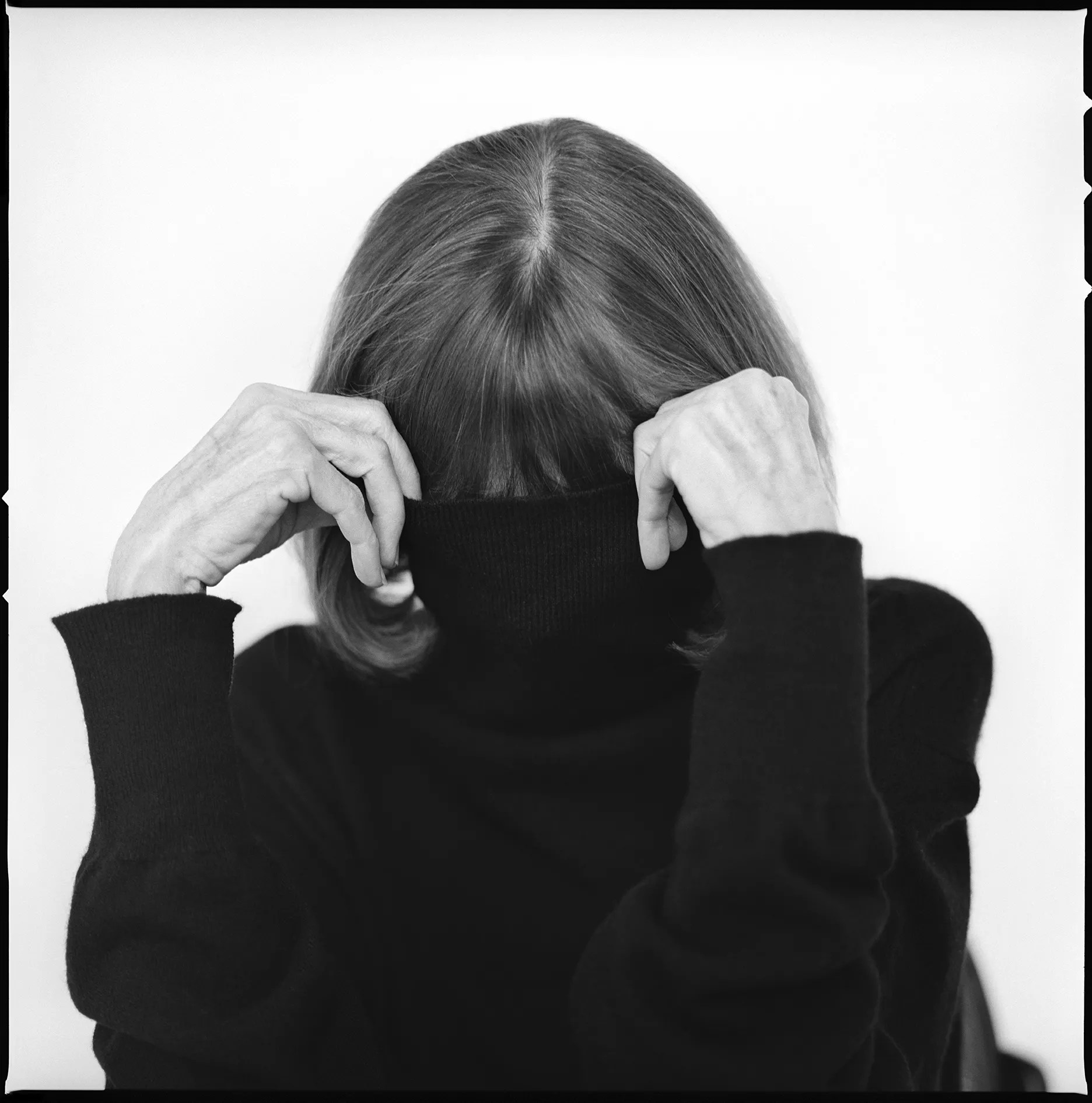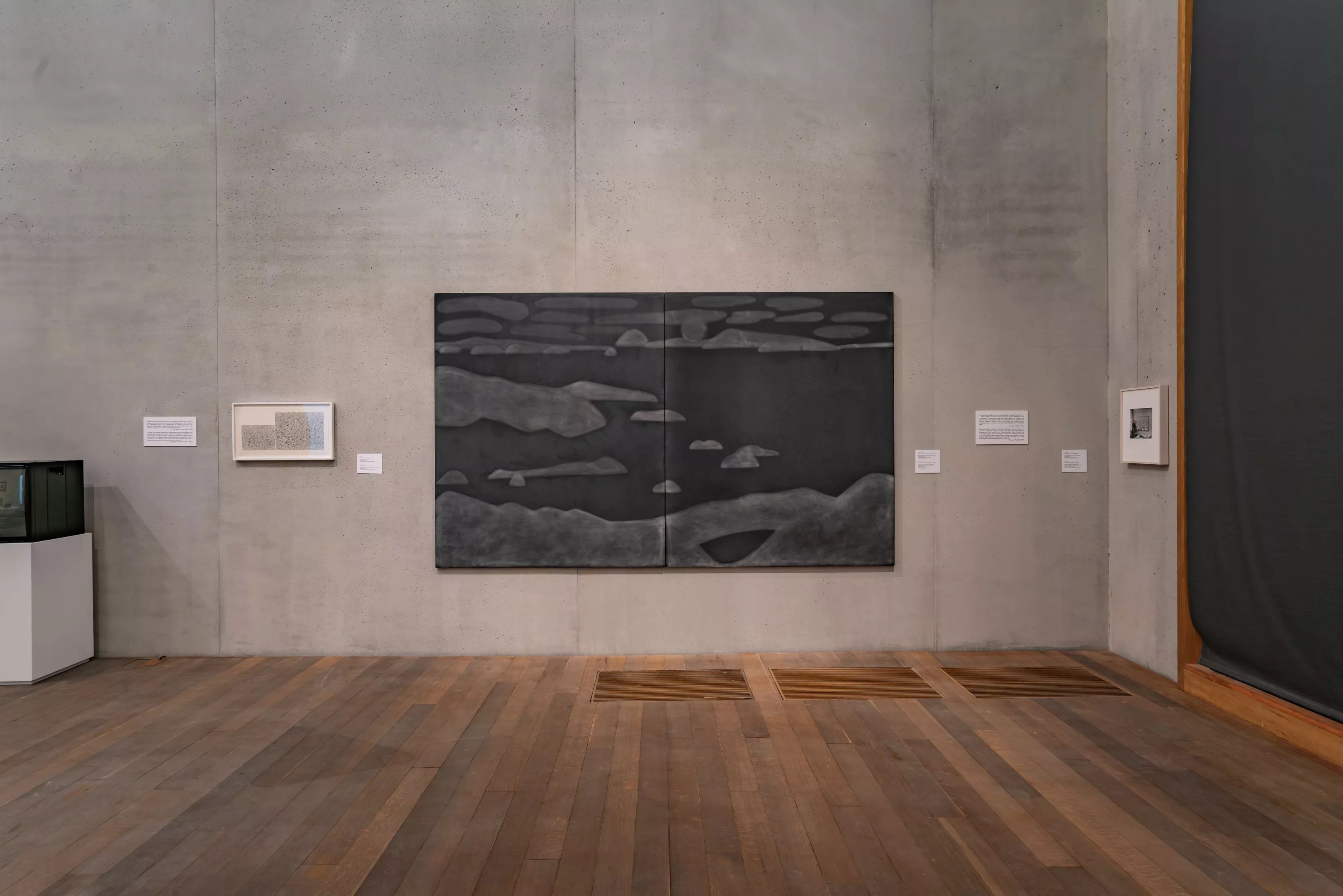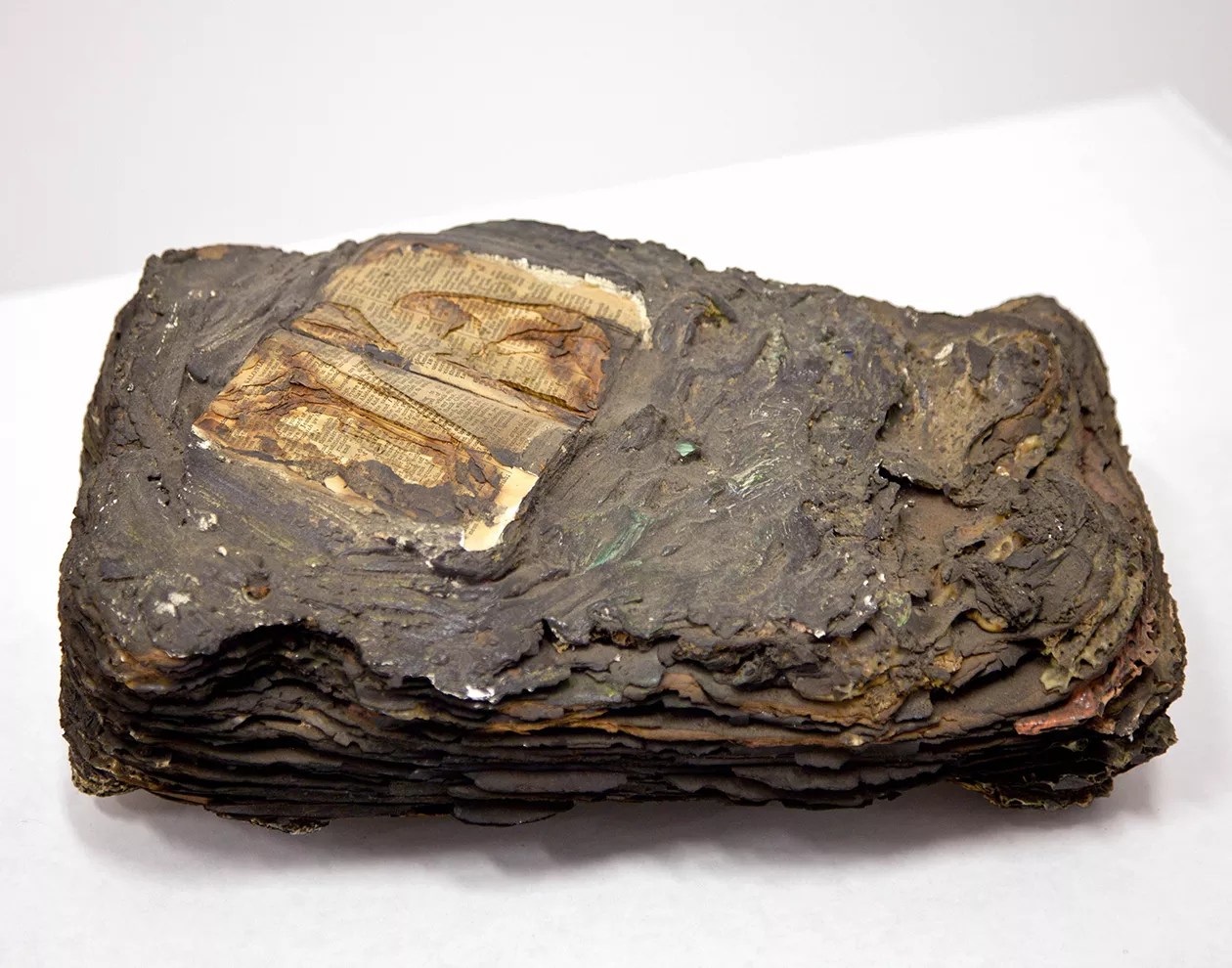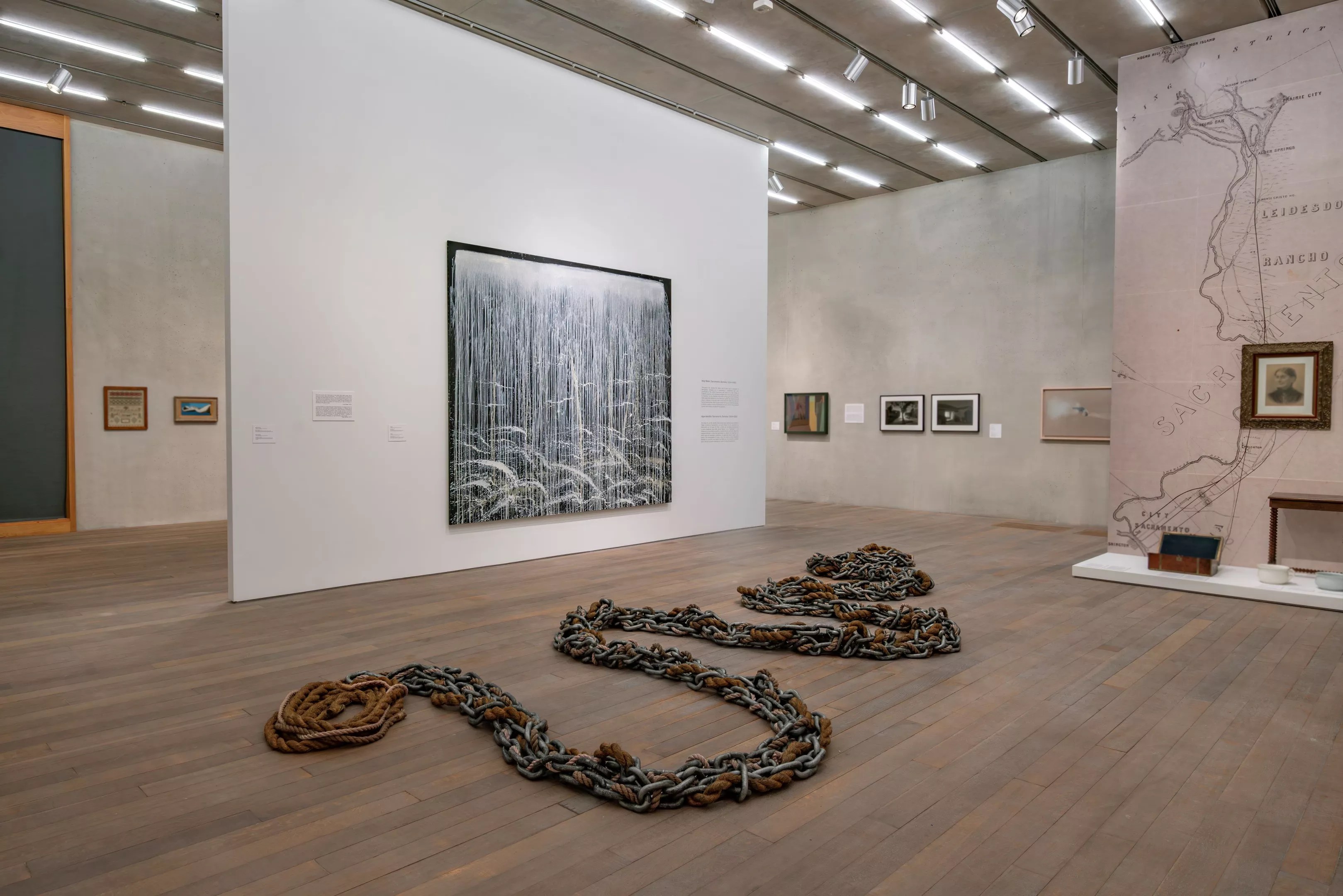
Courtesy of the artist and Lacombe Inc.

Audio By Carbonatix
Joan Didion, one of the great American writers of the 20th Century, had been someone in New York, then Los Angeles. In 1985, she came to Miami to be someone else.
Having already made a name for herself as a successful novelist, screenwriter, and magazine journalist, the author of California chronicles such as Slouching Towards Bethlehem was transitioning toward politics and away from her reputation as a culture writer. She had already begun to look into U.S. interference in Latin America in Salvador, and her investigations led her to a South Florida that she saw as a conflict zone in and of itself.
“She didn’t wanna be Miss Lonely Hearts, writing pieces that were distinctly personal,” says Hilton Als, theater critic for the New Yorker and curator of “Joan Didion: What She Means,” an exhibition exploring her life and work. “She was interested in the ways aspects of the country become closed off because of politics, or history, or both.”
After several visits to the city beginning in 1985, Didion published Miami, a book with a title as simple as it is definitive, in 1987. Now, two years after her death, and as the Pérez Art Museum Miami prepares to mount its version of “What She Means,” the short nonfiction volume (only 238 pages) still feels like the essential portrait of the city. Didion’s outsider eyes look past the tourist front to reveal instead a Southern American city in an unhappy transition, battered by the winds of geopolitical turmoil into the Latin metropolis it has become today. Vice and cocaine clichés are rendered into mere sideshows as she describes the city’s dark idiosyncrasies, still taken for granted by beleaguered locals, with skillful clarity. The boom-and-bust speculative real estate cycle, the obsession with wealthy appearances and heightened security, the all-too-visible gulf between the rich in gated communities on islands in the bay and the poor in mainland slums – it’s all here. Her juxtaposition of the city’s damp climate with its slippery people and fluid flows of currency is particularly masterful: “A certain liquidity suffused everything about the place…Local money tended to move on hydraulic verbs: When it was not being washed, it was being diverted, or channeled through Mexico, or turned off in Washington.”

Installation view of Joan Didion: What She Means at the Pérez Art Museum Miami
Photo by Lazaro Llanes
“There’s no doubt that she had a talent for that kind of work,” says Maritza Lacayo, assistant curator at the PAMM and a self-described fan of Didion who organized the museum’s presentation of “What She Means.” “Being able to insert herself into a situation that maybe isn’t her home or her community and be able to really extract as much information from it as possible – I think it’s a very particular skill that not everybody has.”
Just as Didion was able to distill the essence of a certain time and place in her writing, “What She Means” attempts to illustrate her life through artworks and objects taken from a multitude of sources. “In terms of devising the show,” Als says, “we thought, what if we use objects by artists to talk about literature? Which especially works well with a strongly visual writer like Joan.”
The show’s structure is divided into four parts charting two phases in Didion’s life, with corresponding memorabilia and art. Movie posters from films she wrote – the Al Pacino vehicle The Panic in Needle Park and the 1976 Kris Kristoffersen/Barbra Streisand A Star Is Born remake – a photo by Ed Ruscha of a car at night, and a sculpture by Noah Purefoy of debris from the Watts Riots depict her time in Los Angeles in the 1960s and ’70s. To represent her youth in arid Sacramento, where she developed the lifelong fixation on water put to work in Miami, the curators have chosen John Wayne film stills and maps of the city, placed alongside a photorealistic Vija Celmins drawing of a dry riverbed and Pat Steir’s paint-dripped abstract expressionist painting July Waterfall. Some of the pieces are by younger artists, some are by Didion’s contemporaries, and a few are even older. For instance, her early New York period features an Edward Hopper painting. Excerpts of Didion’s writing are also included.

Noah Purifoy, Watts Uprising Remains, ca. 1965-66
Photo by Karl Puchlik
“You see the ways in which artists were influenced by her,” Als says. “The life of the person is the frame, and within that frame, we use objects as a kind of vocabulary to tell the story.”
This isn’t the first time Als has attempted to capture a literary figure in this way. The show came to fruition when the Hammer Museum approached Als about curating an exhibition on an author similar to one he’d done on James Baldwin. “It’s California; it’d have to be Joan Didion,” he recalls saying. He then contacted the author, who gave her blessing to the idea shortly before she passed away.
When asked to answer the statement posed in the exhibition title, “What She Means,” Als describes Didion as “one of the more significant voices that we’ve had in America, about America, and how this nation, this very complex nation, spreads to Central America and other parts of the globe, and her work is a kind of personal and political accounting of the ways in which politics is not divisible from the personal.” That extends deeply to Miami, which the critic feels is an essential text for understanding the city. Lacayo, who organized the PAMM version of the show, feels similarly.
“I think that if people are willing to open up this book and read it, I think that they’ll be surprised to see that this is, I would like to think, a very unbiased portrait of that time. And it explains why things are the way they are today and why South Florida shaped itself the way it did, especially if you’re kind of honing in on 1980.”

Installation view of Joan Didion: What She Means at the Pérez Art Museum Miami
Photo by Lazaro Llanes
Indeed, Didion identifies the year of McDuffie and Mariel, two seismic socio-political events, as having changed the city for good, describing the atmosphere of that spring as “one of collective fever.” Her assessment of the racial tensions stoked by them still rings boldly. She all but crucified the white upper class for pushing down the city’s Black citizenry and belittling the newly arrived Cubans, who would soon overwhelm them in population and influence, with particular emphasis on the Miami Herald. She paints Miami Anglos as deeply anxious over the Cuban refusal to speak and learn English and assimilate fully into American life, writing, “There had come to exist in South Florida two parallel cultures, separate but not exactly equal.”
Cuban intrigues naturally form the heart of Didion’s book. Violence, invariably committed by “men of action” in service to the counter-revolution, colors Miami in a dark shade of blood red as vivid as a South Florida sunset. In her eyes, el exilio is macho, militarized, and obsessed with fighting Fidel Castro in ways that blow back on their community. They assassinate and purge each other over perceived betrayals and minor political disagreements, openly lionize paramilitary cells such as Omega 7 and Alpha 66, and treat the failed Bay of Pigs invasion as a civil religion. Political figures like then-mayor Xavier Suarez even flaunted their connections to the CIA. That his son, current mayor Francis Suarez, eventually took his place and now plots a misguided presidential run while flaunting mounting corruption allegations makes the book feel all the more prescient.
Even Als, a consummate, born-and-raised New Yorker, albeit with Caribbean heritage, feels Didion captured the city with eerie accuracy. Before his last visit to Miami, he had never left the beach, but after having crossed the causeways and driven its streets with a local, seeing how the city “mushroomed,” he understood what she had observed all those decades ago.
“I was amazed and so happy that her writing was so accurate, and what we were doing was accurate as well.”
“Joan Didion: What She Means.” Thursday, July 13, through January 7, 2024, at Pérez Art Museum Miami, 1103 Biscayne Blvd., Miami; 305-375-3000; pamm.org. Tickets cost $12 to $16.